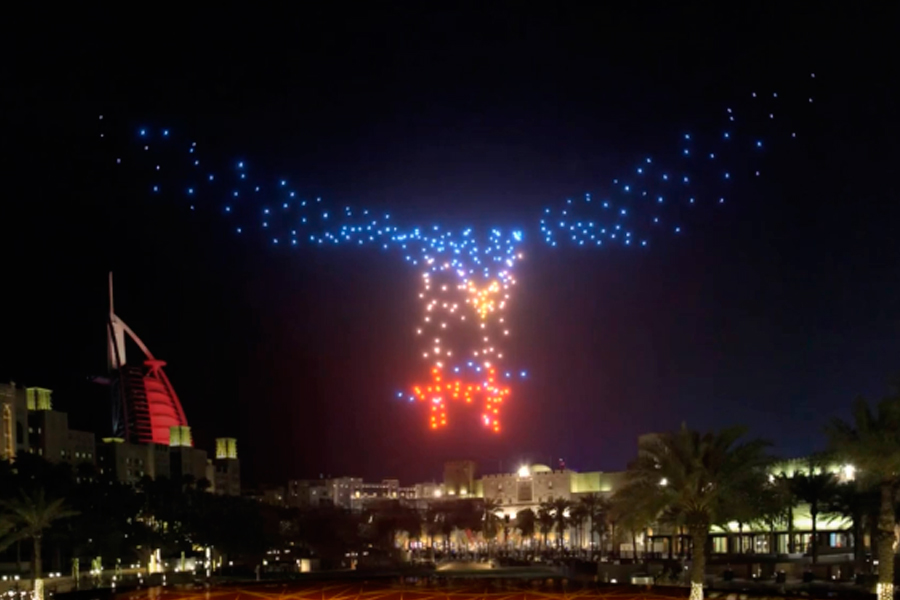Sorry, fireworks, it’s been a pleasure looking at you, but you are out. We are looking for something else to take our breath away. Dancing drones is a new trendy thing, giving people a thrill of fresh experience – same sparkling lights, but smart. But how does it work? Let’s take a peep behind the scenes and watch show creators at work.
If there is a swarm of 300 or 1,000 drones, imperfections in their position against one another and the ground are scarcely noticeable – this vigorous whirling formation of pieces of light, each separated by a few meters from the rest, is too big, and any error or desync is almost invisible. Even if a couple of drones just fall down, it’s no bother. Though it’s not the case for hotels and parks preferring drone show of 20 to 90 flying dancers. There is no margin for error and drones are expected to move in perfect harmony. So, how to prepare a drone show? You can’t just make these vehicles pirouette in the air with perfect timing, can you?
Step one. Drones
For a start, you need to set your fleet ready for the show, i.e. make sure every drone is unbroken, properly configured, and nothing is missing after transporting. We at NNTC prefer to operate ready-to-use DJI drones or assemble them ourselves.
Step two. Staging the show
It all starts with 3D modeling.
Motion graphics created in Blender, for example, is converted from animation trajectories to a format readable by the autopilot. Before going to the field, we perform thorough testing involving simulators. We put virtual instances of drones into necessary coordinates and operate them as real appliances using our software. This way we can evaluate their flight in real-time, as well as visualize the outcome in a 3D scene.
Here, have a look:
Step three. Harmony
To ensure precise movements and perfect timing, you will need a special software, for example, Drone Dance Controller produced by our vendor UgCS. The programming team worked hard on the autopilot that navigates the ballet of drones along random trajectories with accurate GPS time synchronization. The trajectories can be drawn using either a 3D computer graphics software or scripts. Now, when everything is set, all an operator needs to do is press ‘Start’ and watch the show closely.
Step four. Test
We can finally test everything in practice and see what drones can actually do. We deploy our infrastructure (ground control station and communications), arrange drones, and check if all of them are OK after transportation and can be connected to our station. The software will then automatically determine a route for each particular drone. Finally, we set a start time, and off we go!
Step five. The show
Now you’re ready. During the flight, both the operator and other people in charge need to monitor the fleet condition and, if necessary, decide to perform the emergency landing of a drone, which is out. Remember, you should mind certain restrictions before starting the show. No ‘whatever the weather’: rain or wind speed of over 5 m/s is likely to ruin the accuracy of drone’s position in the air. To communicate with drones, we need radio frequencies being rather free from other signals. Spectators need to be at a certain distance from the show venue for their own safety.
Watch how the drone show must go on:
We bring the most ambitious fantasies, ideas and dreams to life with drone and laser shows. Visit this page for more information, if you are looking for how to order a drone show, or if you want to talk to an expert and learn how the drone show will work for your occasion and venue.
